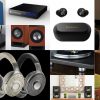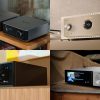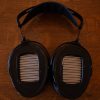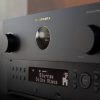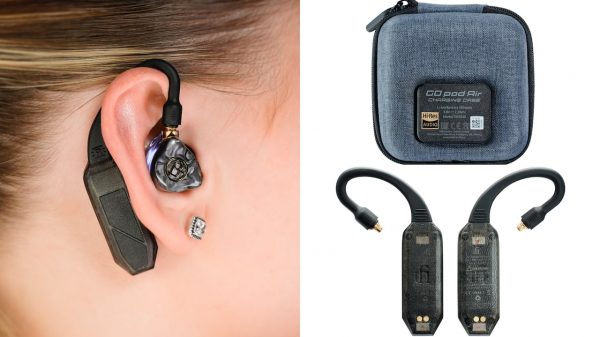TWS earphones have evolved significantly over the past decade, improving from unreliable, poor-sounding models to offering all-day battery life, stable connectivity, and sound quality that rivals wired counterparts at similar price points. There’s still room for improvement, but the progress has been remarkable. For those of us who use them on a daily basis, the evolution has been rather extraordinary. Sony’s LinkBuds Fit prove that things are getting better with each new product cycle.
What I don’t enjoy doing is telling friends, relatives, and readers that they have to spend a lot more than they imagined on a pair of TWS earbuds to get something that offers a combination of great sound quality and all of the features that they may require.
The best TWS models from brands like Sennheiser, Bowers & Wilkins, Bose, and Sony typically cost $300 or more, which many find hard to justify. Most people seek alternatives that offer high-end sound and features at a more affordable price.
$200 doesn’t feel all that expensive in 2025 for a pair of TWS earbuds from a manufacturer like Sony, but with that price comes a few caveats which we will discuss.

Unboxing & Design
The Sony LinkBuds Fit kicks off today’s review, offering a more affordable alternative to the flagship XM series while retaining many of its features and technology.
The LinkBuds Fit come in peg-hook packaging with a white slipcover detailing the contents. Removing the cover reveals a lift-top box, with the case on the top shelf and the charging cable and ear tips stored underneath.
The case is a compact, nearly square design with equal width and depth but about half the height. Similar to the LinkBuds Open, it features a glossy, marbled top and a matte-finished bottom, with a clamshell-style hinge for opening.
The review unit is white, but the LinkBuds Fit also comes in black, green, and violet. The earbuds and covers are stored inside the case. While the LinkBuds series shares similar case designs and dimensions, they are not interchangeable.

The earbuds have an unconventional shape that doesn’t conform to typical geometric forms. The body is oblong, with the nozzle extending from the lower front and charging pads positioned on the upper surface. Their rounded design ensures comfort, but without the outer portion and rubber wing for stabilization, they would have significant movement within the ear.
The outer shell mirrors the inner shell’s shape but in reverse, with a rounded exterior that is slightly smaller. The rubber covers come in multiple colors, including blue, green, pink, violet, and black, as do the case covers.
With various tip colors available, the LinkBuds Fit can be customized to suit nearly any preference. For those seeking a truly unique look, Sony offers a customization service that allows different colors for the upper and lower case segments—and even mismatched earpiece colors if desired.

Fit & Comfort
Since the case is nearly the same size as the LinkBuds Open, it fits comfortably in a pocket. With a case cover, it can also be attached to a keychain or backpack, just like the LinkBuds Open case.
Unlike the LinkBuds Open, the Fit’s earbud covers are secured by a hole that aligns with a raised mic housing on the shell. This design minimizes the effort needed to lock them in place. However, proper tip selection is crucial, with four sizes provided to ensure a secure fit.
The second-largest tip size provided the best fit for me, offering both comfort and a secure seal once installed.
Internal Technology & Battery Performance
The Sony LinkBuds Fit feature an 8.4mm proprietary Dynamic Driver X, incorporating technology from the flagship XM series. Designed for a wide frequency response, the driver uses a blend of materials in the dome to balance lightweight construction with rigidity, reducing distortion and enhancing sound quality.
The LinkBuds Fit share similar electronics with Sony’s XM series, featuring DSEE, noise canceling, and transparency mode. They use Bluetooth 5.3 and support SBC, AAC, LDAC, and LC3 codecs for versatile connectivity and high-quality audio.

The inclusion of both LDAC and LC3 provides a balance between a widely supported high-quality codec and future-ready technology. A pairing button next to the USB port on the rear of the case allows for manual pairing or connecting a second device.
In my testing, the battery life was around 5 hours with a mix of light ANC and transparency mode. However, heavy use of either ANC or transparency mode dropped the runtime to just under 4 hours.
The case offers an additional 3 full charges, providing a total of 16 to 20 hours of usage before needing to recharge via USB. However, it’s worth noting that the case does not support wireless charging, which is a bit disappointing.

Control App & Earpiece Controls
The LinkBuds Fit are controlled through the Sony Sound Connect app, available for both Android and Apple devices. While the app serves all Sony wireless headphones and earphones, it efficiently hides irrelevant features based on the connected device, avoiding a cluttered interface.
Since the same app is used for the Fit, the Open, and even the XM4 and XM5 models, the interface can appear quite different depending on which device is connected, tailoring the experience to the specific model in use.
I found that while I could connect multiple Sony earphones to my phone, the app only controls one at a time and prefers the XM series if connected. So, when using the LinkBuds, it’s best to ensure they are the only Sony device connected for seamless control.
The first option in the app is switching between ANC and Transparency modes. If Transparency mode is selected, additional options appear, including an auto-adjusting mode and voice pass-through. While these settings are useful, I found myself using the EQ options more frequently. The EQ offers 8 presets, a manual setting, and the ability to save two custom profiles with 5 adjustment bands.
The EQ options provide a broad range of choices to suit different musical preferences, which I found especially helpful depending on the environment. The “Find your EQ” feature cycles through the presets, letting the listener quickly choose the best setting, which is a nice touch for adjusting EQ on the fly.
Another interesting sound feature is the background music effect, which lets the listener simulate the experience of music playing through speakers in different environments. The default is a café setting, but there are also options for “my room” (a small space), “living room” (a mid-sized space), and larger settings, allowing for a customizable listening experience.
Sony’s DSEE system is included, allowing users to upscale low-bitrate content to improve fidelity. While most sources today use relatively high bitrates, reducing the need for this feature, it can still be helpful for enhancing lower-quality audio.
The Spatial Audio with head tracking feature is somewhat limited, working only with select Android devices, while Sony’s 360 Reality Audio requires a connection to a Sony-supported source. Unfortunately, the LinkBuds Fit do not support the more universally compatible Dolby Atmos spatialization.
Other non-sound features include auto-play, which automatically starts a playlist when the earbuds are put on, auto-pause to stop music when they are removed, and head gestures, allowing users to answer or reject calls with head movements.
The earbuds offer limited touch controls, including double-tap for play/pause, triple-tap for skipping songs, and quadruple-tap to lower the volume by default. These settings can be customized via the app. Additionally, new voice controls allow users to check battery status, adjust volume, and navigate between previous/next tracks.
While the touch and voice commands don’t cover the full range of options, they do make it easy to perform the most common tasks without needing to grab your phone, though the app will still be necessary for more advanced functions.

Listening
The Sony LinkBuds Fit have a V-shaped sound signature with a bit more emphasis on the lower frequencies, giving them a slightly dark and warm sound that leans toward a polite tuning. This is especially true with ANC enabled, where I found the bass to be more pronounced but slightly less defined compared to the default sound without the additional processing.
There is some sub-bass presence, though it lacks much texture in the range below about 75Hz, where it starts to gain better definition. The mid-bass has roughly the same emphasis as the sub-bass but drops off slightly as it transitions into the lower mids.
The mid-bass is well-defined, with good timbral accuracy and speed, preventing it from sounding muddy or thick despite the elevated bass. However, one cautionary note is that it’s difficult to reduce the bass significantly through the EQ, so those seeking a more neutral sound may find the LinkBuds Fit less suitable, even with adjustments.
The lower mids are slightly scooped, which causes lower vocals to sit a bit behind the higher frequencies. At times, this range can be hard to hear, especially when the bass or treble is more prominent, as both tend to take the spotlight when things get busy.
There’s a rise in the upper mids that extends into the lower treble, giving higher voices more energy than I’d prefer at times. However, this range responds well to EQ adjustments if desired. Guitars have good texture, but the strings can come off as a bit thin and slightly bright, indicating that these were likely tuned with more popular genres in mind.
The lower treble peaks around 4kHz, then drops off gradually at first and more rapidly above 7kHz. This limits air and sparkle at the high end but prevents the Fit from sounding piercing or fatiguing.
However, I did notice that upper voices can become sibilant, and some plosives can sound sharp due to the tuning. Additionally, cymbals and hi-hats can sometimes come off as a bit tinny.
The Fit excels in its immersion. While the soundstage isn’t particularly expansive in any dimension, it’s well-proportioned, placing the listener right at the center of the action. Movements within the space are well-defined and easy to track, creating a more engaging listening experience.

ANC Performance
LinkBuds Fit are limited in their ability to block or reduce external noise since they lack passive isolation. Active Noise Cancellation (ANC) does a decent job of reducing low, droning sounds—like plane engines or train wheels—significantly, but higher-pitched noises and voices can sometimes cut through more easily.
In my testing, it was noticeable that voices seemed to cut through at the same volume whether ANC was on or off, which highlights the lack of passive isolation. When worn without music, it’s possible to carry on a conversation without raising your voice, further indicating low passive isolation, as we typically raise our volume in response to diminished side-tone.
On the flip side, call quality and transparency mode are both very good. The noise rejection for background sounds during calls is on par with the XM series models, offering clear communication even in noisy environments.

The Bottom Line
The number of people citing exercise as their primary reason for purchasing in-ear headphones has steadily increased alongside advancements in TWS technology. It’s no surprise, then, that companies like Sony are offering multiple models specifically targeting this market segment.
The different Sony LinkBuds models cater to various sub-sets of buyers within the exercise-focused market. The LinkBuds Fit are designed for those who want to block out external noise during workouts but still have the option for situational awareness when necessary. For those who prioritize situational awareness, the LinkBuds Open provide that feature.
The LinkBuds Fit also address the demand for improved sound quality at more affordable price points. While $200 is still higher than many budget options, it’s encouraging to see technology from the flagship XM series becoming available at lower prices.
Overall, the LinkBuds Fit offer decent water resistance, good sound quality, reasonable battery life, acceptable ANC performance, and solid comfort while staying firmly in place. There’s a lot to like for those seeking a reliable workout companion.
Pros:
- V-shaped sound signature
- Decent battery life
- Good call quality
- ANC and transparency modes available
Cons:
- ANC not quite on par with XM series
- Limited touch and voice controls
- Limited response to EQ especially in lows
- No wireless charging
Where to buy
Related Reading








